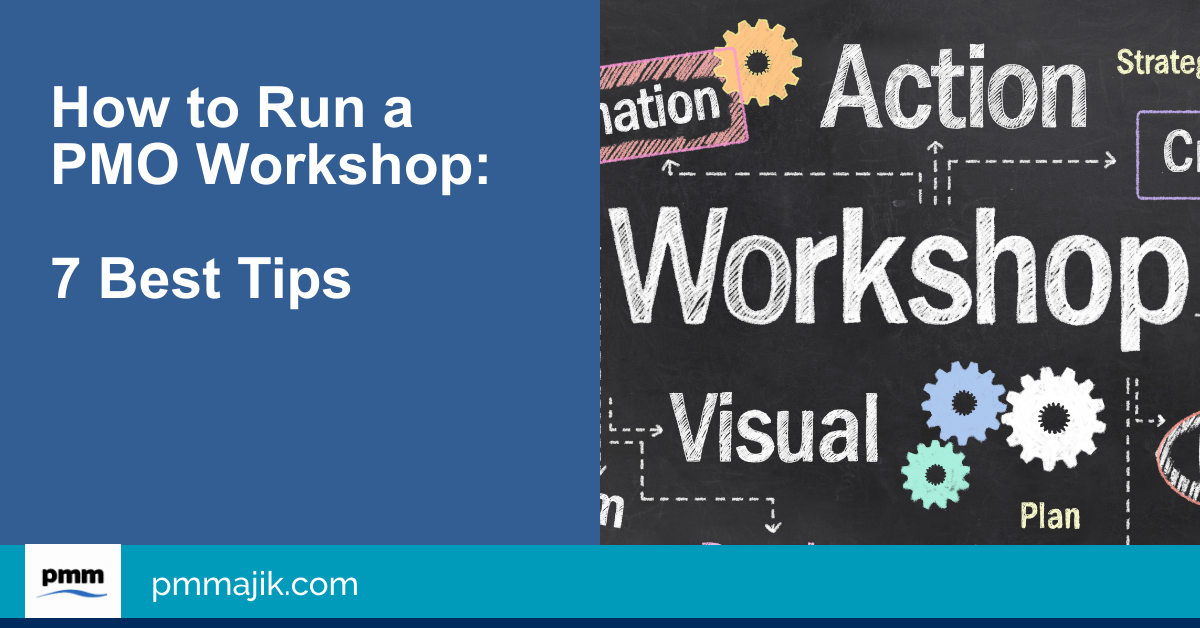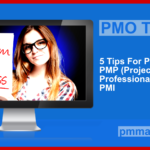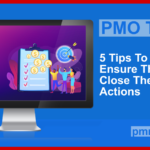Running a workshop for your project management office (PMO) is a great way to get to the bottom of an issue or get a clear outcome for a decision. Follow our seven tips for running a PMO workshop, and you’ll have a successful session.
Workshops are a valuable tool for your PMO and can help your office and projects get to the bottom of issues or drive decisions in a session that could take weeks of back and forth by email.
1. Know who to expect
It’s important that you know who will be at your workshops. When you prepare your PMO workshop, you send invites to everyone, and you should keep track of RSVPs. You will know the expertise that will be present, so you know how to target your session.
It will also help you understand if there are any special requirements for running the workshop and give you an idea about how long the breaks will be, for example.
2. Stick to your agenda
It’s likely you’ll have some strong personalities in your PMO workshop, such as project leaders and people who are experts in and passionate about what they do. This can sometimes derail the timing that you’ve set out.
When running your PMO workshop, make sure that you outline the timings for the session at the beginning. Having a visualisation of the agenda will also help keep the room focussed on the timing of the day.
You don’t have to be down-to-the-minute accurate with timings, but know where you will pull time from if a productive activity overruns.
3. Take advantage of technology
Making your workshop interactive will help keep everyone engaged and also improve productivity. Having a presentation or PowerPoint to run through the main points and keep information visible is simple but effective.
Depending on what you’re aiming for in your workshop, you may be able to take advantage of tablets or other shared tech during breakout or team sessions.
4. Build in breaks
Keeping everyone in a room for a prolonged period isn’t going to be productive. Especially if your sessions are talking- or ideas-heavy, you need to make sure everyone stays sharp.
Work on building a balance between productive time and space to have breaks for everyone in attendance. Running a PMO workshop with sufficient breaks will make sure everyone will be happy to come to future workshops with you.
5. Focus on your outcome
Throughout your workshop, you need to maintain focus on the outcome you’ve planned for. You should have a clear target about what you expect from your session and have this communicated beforehand.
It can be helpful to keep the main question of the workshop displayed on a screen or a flipchart. Every planned activity should focus on this goal, and having it visible throughout will help keep everyone on track.
Have your deliverable planned so you know what success in the workshop looks like. If you’re workshopping the project schedule, then have a schedule ready to be filled out; if you’re looking for ideas to move a project forward, be sure to have a space to record the ideas clearly.
6. Record the workshop
A workshop can be a hive of activity and ideas for everyone in attendance. Sometimes, not everything will be captured in writing, and you definitely won’t remember every salient point raised.
Run your workshop with two different recording methods. Have a video recording of the session, making it as unobtrusive as possible. It’s also worth having someone taking notes, so you have the records quickly accessible after the session.
7. Send out a follow-up
A good workshop will have a solid outcome, and you need to make sure this is shared. Whatever your desired outcome, it’s important everyone is clear on what happened.
You will hopefully have stakeholders with the power to implement the changes and actions that get agreed. Recording the actions that have been agreed upon and making sure everyone knows what to do next will make sure the workshop has been beneficial.
Running a PMO workshop
Maintaining focus on your goals will make running your PMO workshop a success. Follow our seven tips for running a PMO workshop, and you’re going to have a successful outcome.






